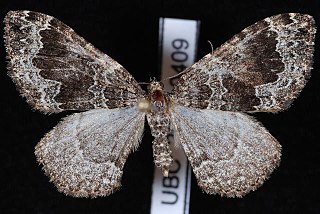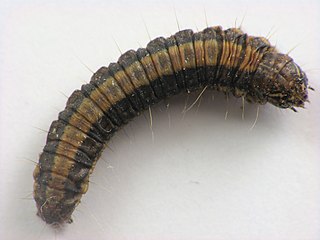Pygoctenucha is a genus of moths in the family Erebidae. The genus was erected by Augustus Radcliffe Grote in 1883.

Antepirrhoe is a genus of moths in the family Geometridae described by Warren in 1905.

Digrammia was a genus of moths in the family Geometridae erected by Carl Freiherr von Gumppenberg in 1887. It is now often considered a synonym of Semiothisa.
Lychnosea is a genus of moths in the family Geometridae erected by Augustus Radcliffe Grote in 1883.

Nemoria is a genus of emerald moths in the family Geometridae. It was named by Jacob Hübner in 1818.

Perizoma is a genus in the geometer moth family (Geometridae). It is the type genus of tribe Perizomini in subfamily Larentiinae. The tribe is considered monotypic by those who include the genera Gagitodes, Martania and Mesotype in Perizoma. Some other less closely related species formerly placed here are now elsewhere in the Larentiinae, e.g. in Entephria of the tribe Larentiini.

Pero is a genus of moths in the family Geometridae erected by Gottlieb August Wilhelm Herrich-Schäffer in 1855.

Stamnodes is a genus of moths in the family Geometridae first described by Achille Guenée in 1858.

Stenoporpia is a genus of moths in the family Geometridae erected by James Halliday McDunnough in 1920.
Vinemina is a genus of moths in the family Geometridae erected by James Halliday McDunnough in 1920.

The Epipaschiinae are a subfamily of snout moths. Almost 600 species are known today, which are found mainly in the tropics and subtropics. Some occur in temperate regions, but the subfamily is apparently completely absent from Europe, at least as native species. A few Epipaschiinae are crop pests that may occasionally become economically significant.

Homoeosoma is a genus of moths of the family Pyralidae.
Anadelosemia texanella is a species of snout moth in the genus Anadelosemia. It was described by George Duryea Hulst in 1892. It is found in the south-eastern United States.
Scopula aemulata, the imitator wave, is a moth of the family Geometridae. It was described by George Duryea Hulst in 1896. It is found in the south-eastern United States.
Pygoctenucha azteca is a moth in the family Erebidae. It was described by William Schaus in 1892. It is found in Mexico.

Pygoctenucha terminalis, the blue-green lichen moth, is a moth in the family Erebidae. It was described by Francis Walker in 1854. It is found in Mexico and in the United States in eastern Colorado, New Mexico and southeastern Arizona.

Elophila gyralis, the waterlily borer moth, is a moth in the family Crambidae. It was described by George Duryea Hulst in 1886. It is found in eastern North America, where it has been recorded from Alabama, Florida, Georgia, Illinois, Indiana, Iowa, Louisiana, Maine, Maryland, Massachusetts, Michigan, Minnesota, Mississippi, New Brunswick, New Hampshire, New Jersey, New York, North Carolina, Nova Scotia, Ohio, Oklahoma, Ontario, Pennsylvania, Quebec, South Carolina, Tennessee, Texas and Wisconsin.
Abegesta reluctalis is a moth in the family Crambidae. It was described by George Duryea Hulst in 1886. It is found in North America, where it has been recorded from Arizona, California, Maryland and New Mexico.
Anania labeculalis is a moth in the family Crambidae. It was described by George Duryea Hulst in 1886. It is found in North America, where it has been recorded from Arizona to western Texas.
Choristostigma roseopennalis is a moth in the family Crambidae. It was described by George Duryea Hulst in 1886. It is found in Mexico and the United States, where it has been recorded from Arizona, Georgia, Indiana, Maryland, North Carolina, Ohio, Tennessee and Texas.









